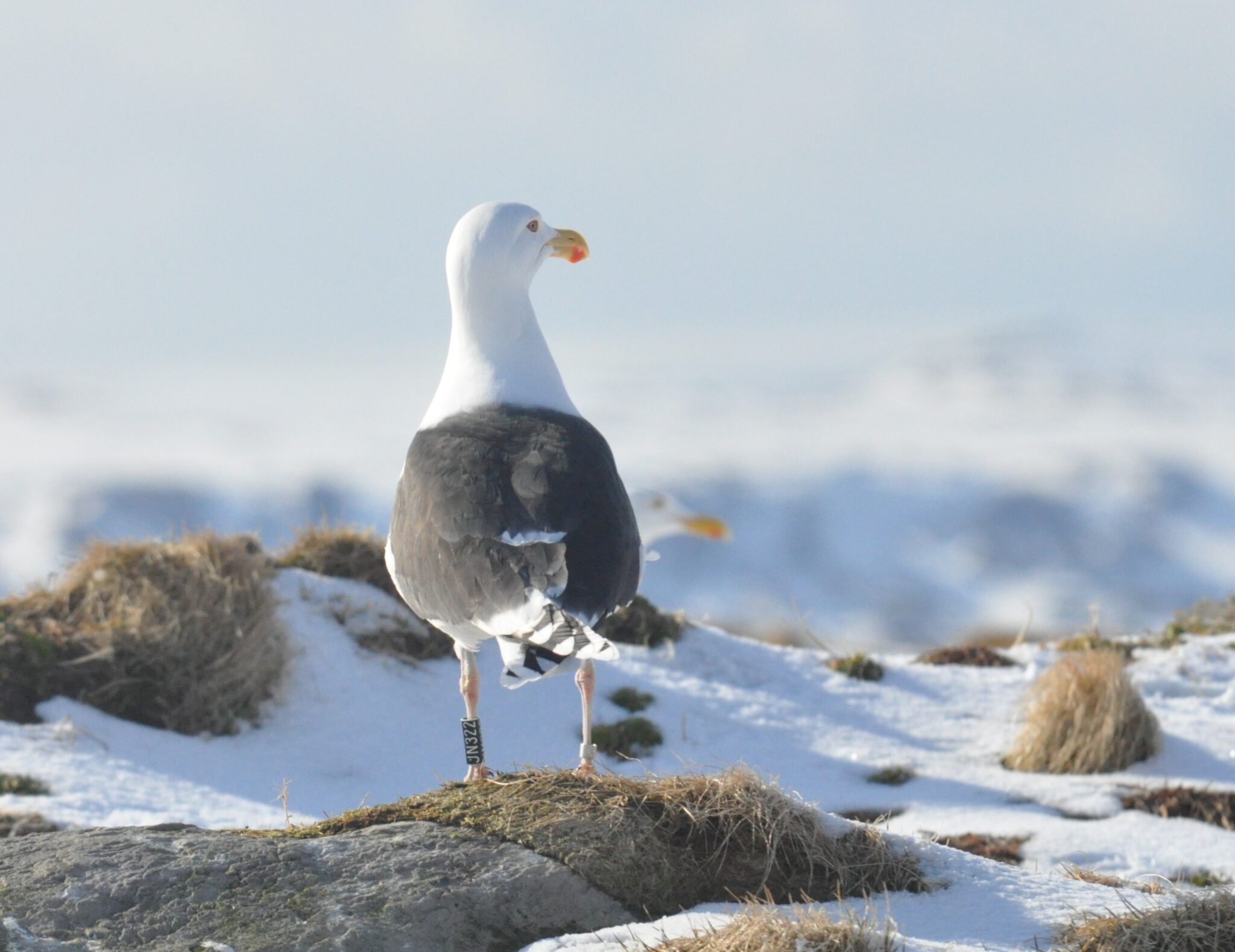Modelling tool reveals causes of decline in great black-backs
By using a combination of different modelling techniques, researchers in SEAPOP have gained detailed insights into how environmental pollutants and climate change may affect the black-backed gull population on Hornøya, both directly and indirectly.
Multiple threats to seabirds
Our seas are under growing pressure from multiple threats caused by human activities. For seabirds, the most important threats include climate change, pollution and overfishing. We need to understand how these multiple threats, which can affect wildlife in different ways, impact the health of populations and their long-term trends. Belonging to the upper part of the food chain, seabirds are considered more sensitive to environmental changes, and the disentangling the combined effects of such changes is a complicated task.
Combined modelling
In a recently published paper, researchers show how they combine so-called path models with capture-mark-recapture models to study the effects of both climate change in non-breeding areas and levels of persistent organic pollutants (POPs) on yearly adult survival rates in adult great black-backed gulls. The levels of POPs in the birds were measured at their Arctic breeding grounds on Hornøya in North Norway. By using a path analysis, the researchers could look at direct effects of pollutants on survival and also indirect effects via body condition.
Higher survival with warmer ocean
The great black-backed gulls had higher survival rates in years when ocean temperatures in their wintering areas in the North Sea were high. A possible explanation to this is that important prey types for the gulls have shifted northwards due to climate change. Additionally, individuals with higher levels of POPs had lower chances of survival, because POPs had a negative effect on the birds’ body condition.
The power of path modelling
The Arctic breeding population of great black-backed gulls in this study is declining. The analysis shows how, even in such a long-lived species with generally high survival rates, two stressors have had a marked influence with implications for population trends. The study also illustrates the potential of path models in disentangling multiple effect pathways.
Read the article:
Contact person: Kate Layton-Matthews, NINA


